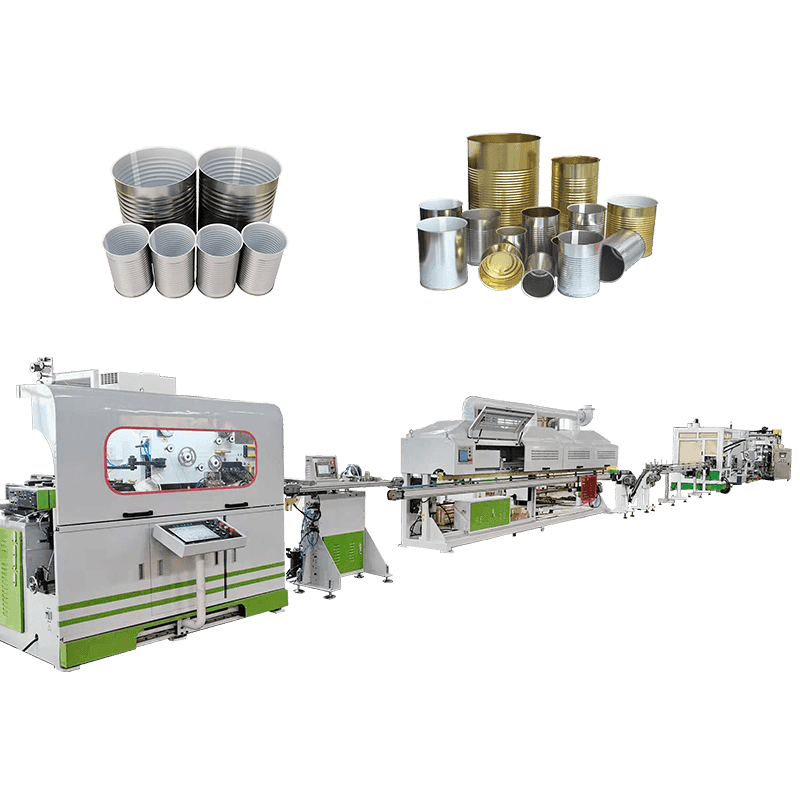Production efficiency measurement standard
Production efficiency usually refers to the number of lug caps produced per unit time. On the production line of twist-off lug caps, the measurement standards of production efficiency include the number of lug caps produced per hour, the downtime of the production line, the operating speed of the equipment, and other aspects.
Production quantity per hour: It is a direct indicator of the production capacity of the production line. The production speed of different models of twist-off lug cap production lines will vary, usually between 1000-5000 lug caps.
Production line downtime: Downtime is an important factor affecting production efficiency. The design of the production line should minimize downtime to improve overall production efficiency.
Equipment operating speed: The operating speed of the equipment affects the time of each production cycle. A higher operating speed can usually improve production efficiency, but it also requires the equipment to have higher stability and quality control capabilities.
The impact of automation on production efficiency
The degree of automation of the twist-off lug cap production line has a direct impact on production efficiency. With the continuous advancement of automation technology, modern production lines are usually equipped with automated control systems that can monitor the production process in real time and automatically adjust production parameters to ensure high production efficiency.
Automated assembly system: The automated assembly system can ensure that the ear cap achieves the ideal screw-on effect during the process of combining with the bottle mouth, reduce manual operation, and improve the speed and accuracy of assembly. The automated system can make the work of each link more precise and reduce human operation errors.
Automated quality inspection system: The automated quality inspection system can check the appearance, threads and sealing of the ear cap in real time, avoiding delays and errors in manual inspection, thereby improving the product qualification rate and reducing the rework rate of the product.
Automated raw material conveying and processing: The automation of the raw material handling and conveying system enables the production line to maintain continuous and stable production without human intervention, reducing manual errors in the conveying process.
Configuration and optimization of production line equipment
The equipment configuration of the production line also has a direct impact on production efficiency. The efficiency, reliability and flexibility of the equipment can effectively improve the overall production efficiency.
Efficiency of the molding system: The molding system usually adopts injection molding or die-casting technology, which can mold the raw materials into twist-off ear caps in a short time. The production efficiency of the molding system can be significantly improved by optimizing the mold design and improving the efficiency of the heating and temperature control system.
Speed of the sealing system: The sealing of the twist-off ear cap needs to be completed through gluing and hot pressing processes. The efficient operation of the sealing system can ensure that the ear cap completes the sealing process in a short time and improves the production speed. Improving the accuracy of gluing and reducing the amount of glue waste can also help improve production efficiency.
High-speed screwing system: The speed of the screwing process determines the connection efficiency of each ear cap and the bottle mouth. The use of a high-speed screwing system can ensure that the production line can maintain good quality control while running efficiently.
Control of downtime during production
Downtime management is a key factor affecting production efficiency. When designing a twist-off ear cap production line, measures to minimize downtime need to be considered. Downtime can be effectively controlled through the following management:
Regular maintenance and maintenance: Regularly maintain the equipment to reduce the occurrence of failures and ensure the stable operation of the production line. For example, lubrication, cleaning and replacement of parts of the equipment can reduce equipment failures and prevent production stagnation caused by sudden failures.
Equipment failure warning system: Modern production lines are equipped with equipment failure warning systems. Once the equipment is abnormal, the system can automatically alarm and prompt the operator to repair it, thereby reducing the downtime of the production line.
Quick replacement of molds and accessories: During the production process, when molds or accessories need to be replaced, the production line should be equipped with a quick replacement system to reduce downtime waiting time and improve overall production efficiency.
Balance between production efficiency and energy consumption
While pursuing efficient production, energy consumption of the production line is also an issue that needs attention. Excessive energy consumption not only increases production costs, but may also have a negative impact on the company's environmental protection goals. Therefore, the design of the swing-off lug cap production line needs to consider how to reduce energy consumption while improving production efficiency.
Energy efficiency optimization: The use of efficient motors and low-energy heating systems can effectively reduce energy waste in the production process.
Energy-saving mode: During the production process, when the production line is in a low-load state, energy consumption can be reduced through energy-saving mode. Timely adjustment of the production rhythm can ensure that the production line operates efficiently while avoiding excessive energy consumption.

 English
English عربى
عربى русский
русский




